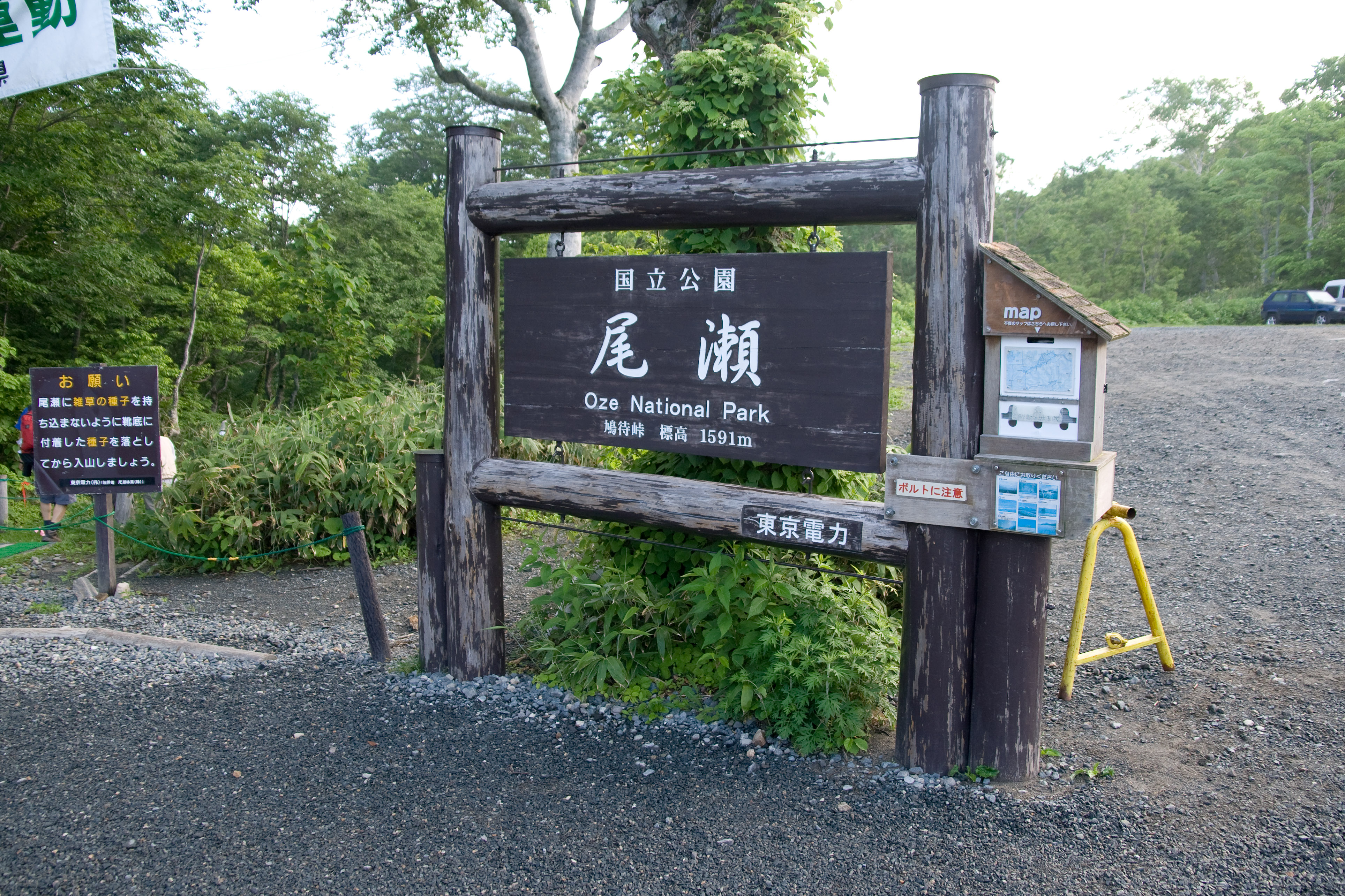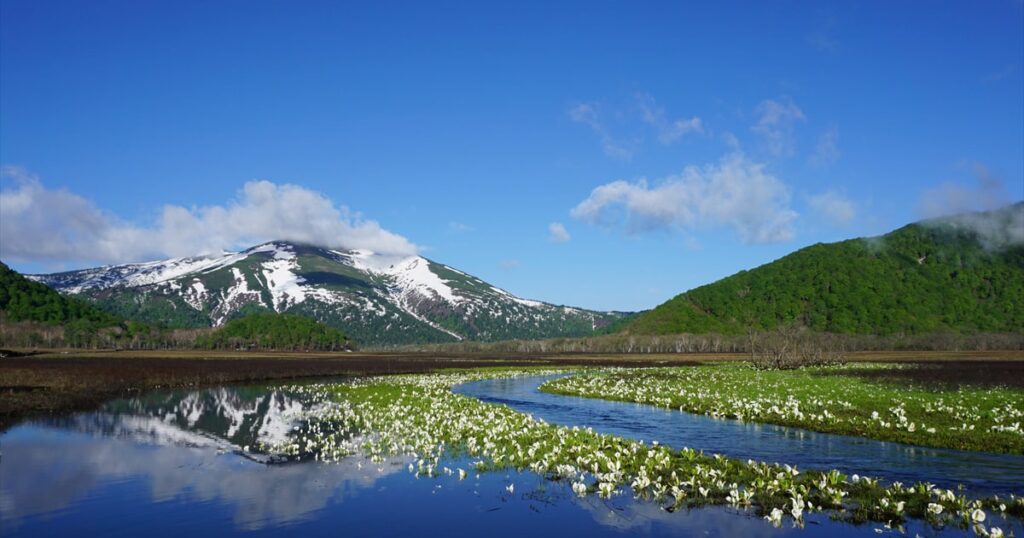Natsu no omoide
Natsu ga kureba omoidasu
Harukana oze tooi soraKiri no nakani ukabikuru
Yasasii kage nono komichiMizubasyou no hana ga saiteiru
Yumemite saiteiru mizu no hotoriShakunage ironi tasogareru
Harukana oze tooi soraNatsu ga kureba omoidasu
Harukana oze tooi soraHanano nakani soyosoyo to
Yure yureru ukishima yoMizubasyou no hana ga niotteiru
Yumemite niotteiru mizu no hotoriManako tsubureba natsukashii
Harukana oze tooi soraLyricist:EMA Shouko
Composer:NAKATA Yoshinao
in 1949
Memory of summer
I remember every time summer runs
far way oze, A very clear sky
I can see vaguely in the fog
Gently shadow, Path in the field
The flower of Asian skunk cabbage is blooming
Dreaming and blooming in around the water
Twigs in the color of rhododendron
far way oze, A very clear sky
I remember every time summer runs
far way oze, A very clear sky
Gently shake in the flower,Gently … gently follow
On a floating island while fluttering
The flower of Asian skunk cabbage is smelling
Dreaming and smelling in around the water
I will remember if I close my eyes
far way oze, A very clear sky

In 1941, just after the end of World War II, NHK created a new program called “Radio Kayou” to provide songs that families could sing together at home, perhaps as a reflection of their regret for having used radio programs like “Kokumin Kayou” to promote wartime enthusiasm.
The song “Natsu no Omoide” was born from this program and is still considered one of the popular Douyo-Shouka songs today. It is known for its beautiful depiction of the refreshing scenery of early summer in Japan.

The Oze area, which is sung about in the song, is a highland marshland that stretches across Fukushima, Niigata, and Gunma prefectures and is designated as a national park and chosen as one of Japan’s 100 scenic spots.
Environmental conservation activities are known to be very strict in this area. The lyricist, EMA Shouko, is said to have been evacuated to Oze in 1944, the year before the end of the war, and wrote the lyrics based on her impressions at the time. However, the symbol of this song, the Mizubasho (Asian skunk cabbage), blooms from the end of May to June after the snow has melted in Oze, so it cannot be seen during the peak of summer. When asked about this, EMA responded, “I call the wonderful season of Mizubasho in Oze ‘summer’.”
Indeed, according to the seasonal calendar, Mizubasho is a summer season word. Even without focusing on Mizubasho, the beautiful landscape is still enjoyable throughout the following seasons with plants like Watasuge, Nikkoukisuge, and Kusamomiji adding color to the scenery.
▼How to go Ozegahara








コメント